2 December, 1999
Life at camp. The hut at Lower Erebus is the highest inhabitable structure
on the continent of Antarctica. At over 11000 ft we feel the effects of the
altitude still after 10 days here. Everyone feels good but after walking a
mile to the ice towers we are winded. Many of you have asked about what it’
s like to be here and how we deal with the routine of living. Below is a
picture essay of the hut, how we cook and live here. Phil has been coming
here for 25 years and he says it has never been above –12oC. Some years
there are two to three work days per week, other years only one work day a
week. Science in this environment is always hard but everything depends on
the weather. We have just endured 4 days of storm and wonder what is in
store for us in the coming month.
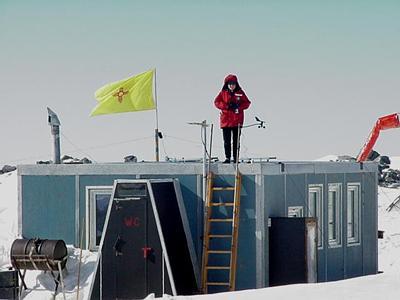
1. The main hut. You can see how small it is. Jessie is on the roof installing the weather station so we can sit warm inside and see how cold it really is outside.

2. To keep the warmth in we have to go through two doors like this to get to the inside. When I first came here I felt I was entering a meat locker. They are heavy and metal and you better have your mittens on when you touch the outside door or your fingers will freeze to it.

3. Inside the hut, life is run by the activities of the kitchen. Here you see our stove with Jean and Noel fixing lunch. We have great food, but adjusting to the altitude is a constant battle. Tonight we have stew, muffins, sliced cucumbers and cake.
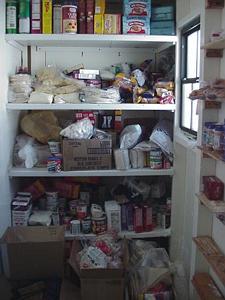
4. Between the outside and the inside hut we have a small cold room where we keep the food. You can see we have plenty of it, but there are 6 of us for 5 weeks. Remember “getting ready,” see the journal day Nov 13. to see how we shopped for and packaged the food. The helicopters brought in 1800 lbs of food for our stay here.
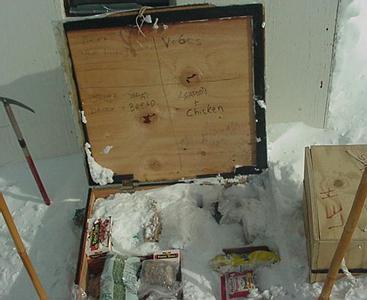
5. This is outside the hut and called the William Perry. Those of you who follow football will understand this. We keep all the frozen food here. As you can see the storm filled our freezer with snow. We have to dig down to find what we want.
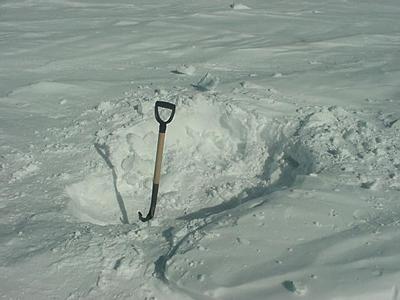
6. One of the daily chores is to haul ice from the well for drinking water. There is plenty of ice as you can imagine, but fuel to melt and heat is limited, so bathing is out. Yes, that’s right, no one has had a wash since we left Mcmurdo, 10 days ago. The well is situated in a place outside the hut where no one walks or drives the ski doos. We need our ice to stay as clean as possible.

7. In the corner of the hut is the stove. The large pot on top we use to melt the ice for drinking water. This is also the only source of heat for the room. There is the constant battle of the windows, some want the place cool and open them, some want the room warm, and close them. I just sit back with a sweater and take it off or put it on.
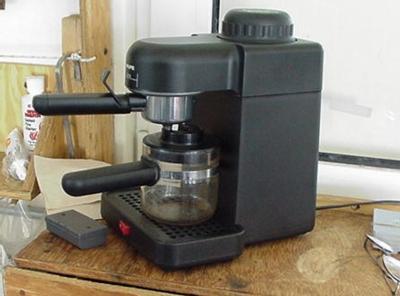
8. Just so you won’t think we are roughing it too much, this is our espresso machine. Brought, and run by Chas every morning, we wake up to fresh brewed espresso, how good can it get.
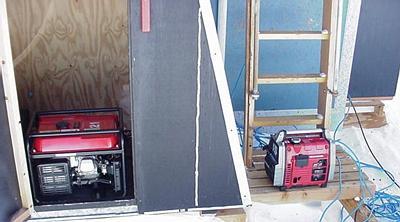
9. The hut has constant electricity supplied by these two generators. Most of the time we run the small one because the only need are the computers and the modems. The big one is only run when we use the espresso machine.
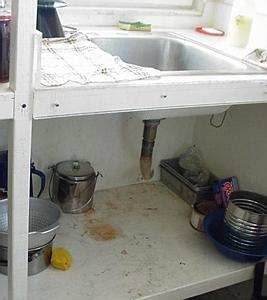
10. The hut does have a sink and this is it. Notice the hose below which exits the hut through a hole in the wall. Of course there is no running water, but this is how we dispose of the dish washing water. Remember we can't leave anything here. We call it =93gray water=94 and this is where it goes=85=85=85=85=85.=20

11. This 55 gallon drum is where the hose from the sink goes, remember we have to ship everything we use back to Mcmurdo. We wash the dishes in the least amount of water possible and hand washing for food preparation is the only body washing allowed. Clothes washing is just not going to happen.
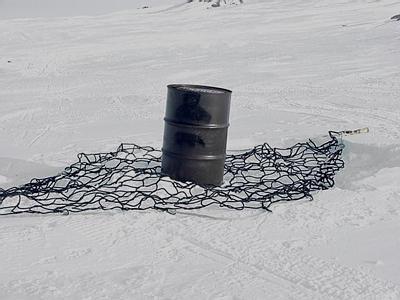
12. This drum is full of gray water and ready to be sling loaded back to Mcmurdo. The helo just hovers and one of us attaches the net to the cable hanging from the helicopter.
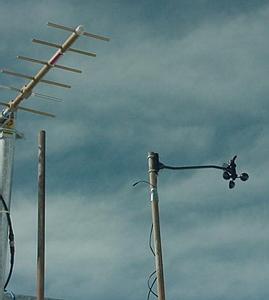
13. On the hut roof is our link to the outside world along with the weather station. The anemometer (machine to measure wind speed) you see next to the telephone link gets filled with snow every now and them and someone has to climb up onto the roof and clean it out. It is fun to be inside and watch the weather change, usually it gets colder and the wind blows faster, rarely the reverse.
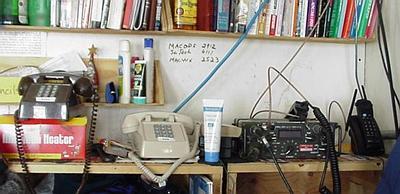
14. From the antenna outside, here is where the line goes, we have two telephones. One for the computers and one for talking to Mcmurdo. We are still not able to receive any email or connect to the internet, but with patience we can send out. Notice our HF radio and cellular phone as well. We call this shelf the comm center.
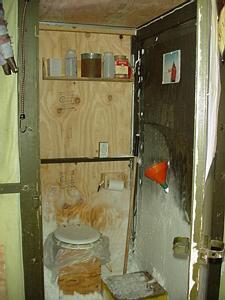
15. Well okay. . . . . okay. . . . .okay.. here is the bathroom. Yes, you will remember because of the Antarctic treaty we are not allowed to leave anything in this environment, yes that means human waste as well. Remember the trash program in Mcmurdo (journal Nov 12), well it extends to the field camps as well. Here we must separate the liquid from the solid. The red funnel is for the liquid, the can for the solid. Yes, the white stuff is snow, this room is not heated,

16. This is my sleep tent, there is one for each of us. You can see the results of the 4 days of storm. I need to dig it out one of these days, but there are many more fun things to do than shovel snow. I have never spent a month in a tent before, let alone sleep on the snow. The reality of the situation is, the tents are cozy and comfortable, but cold and since the sun never goes down here, sometimes it is hard to get to sleep with the light on.
Contact the TEA in the field at
.
If you cannot connect through your browser, copy the
TEA's e-mail address in the "To:" line of
your favorite e-mail package.
|
